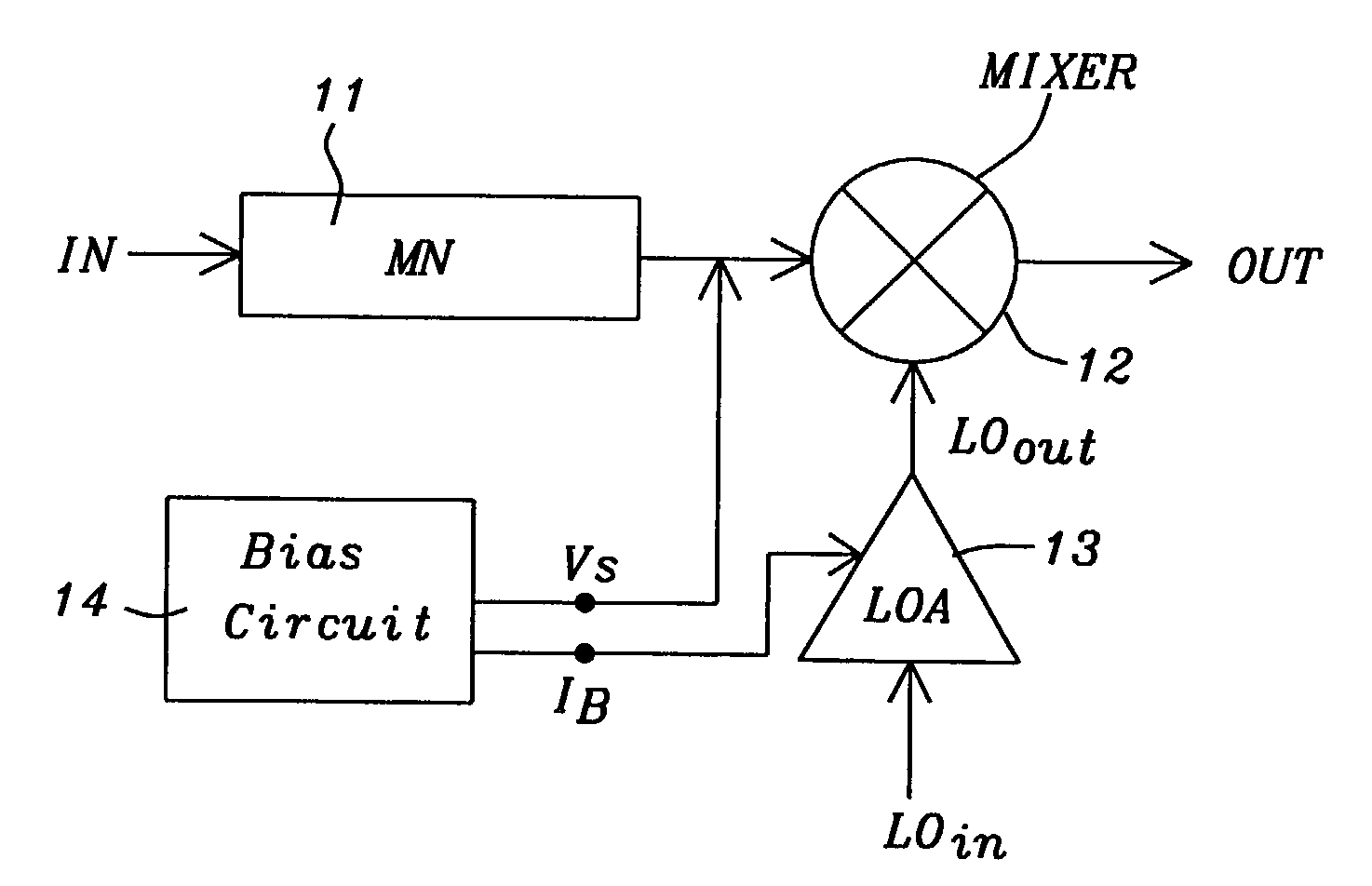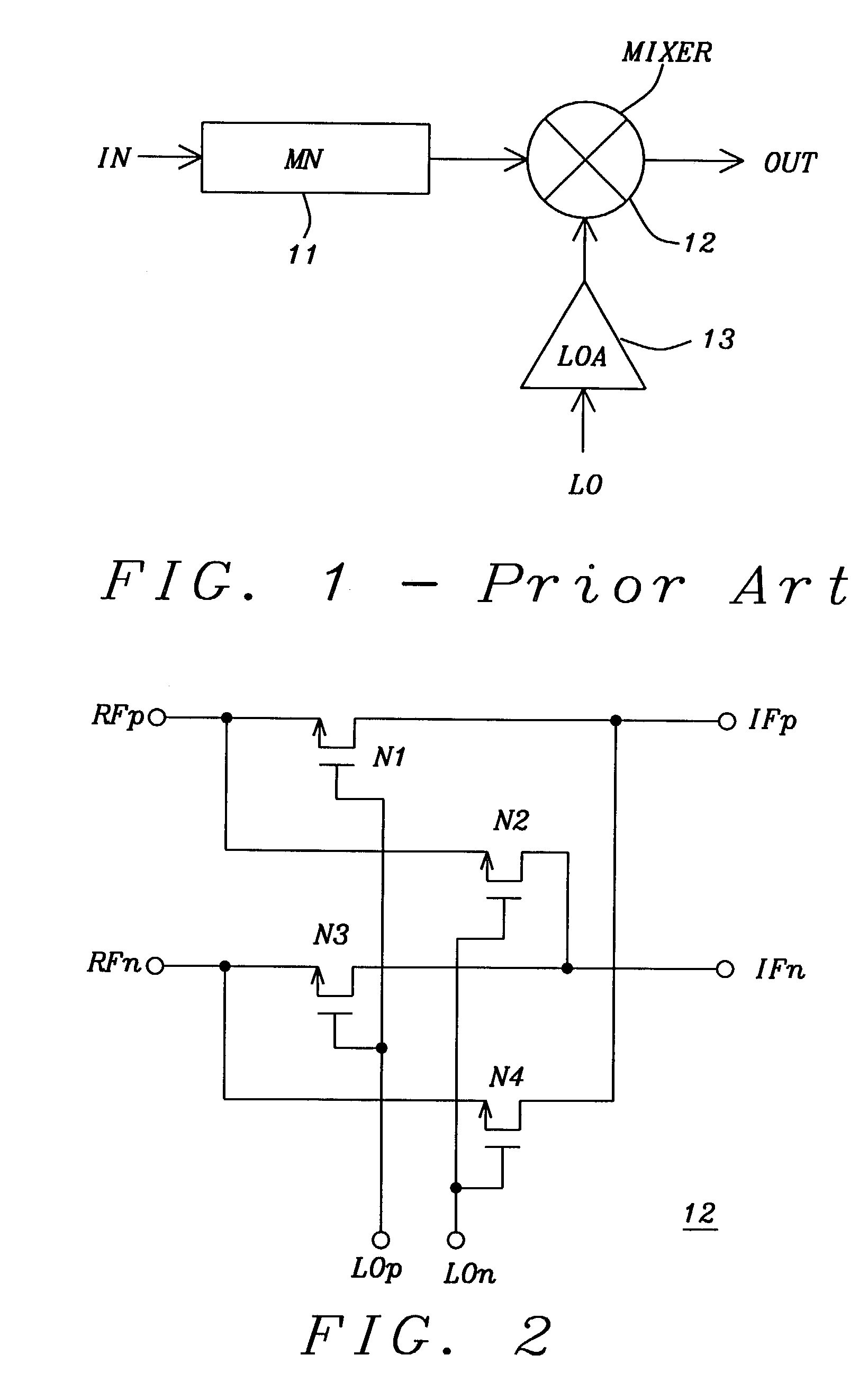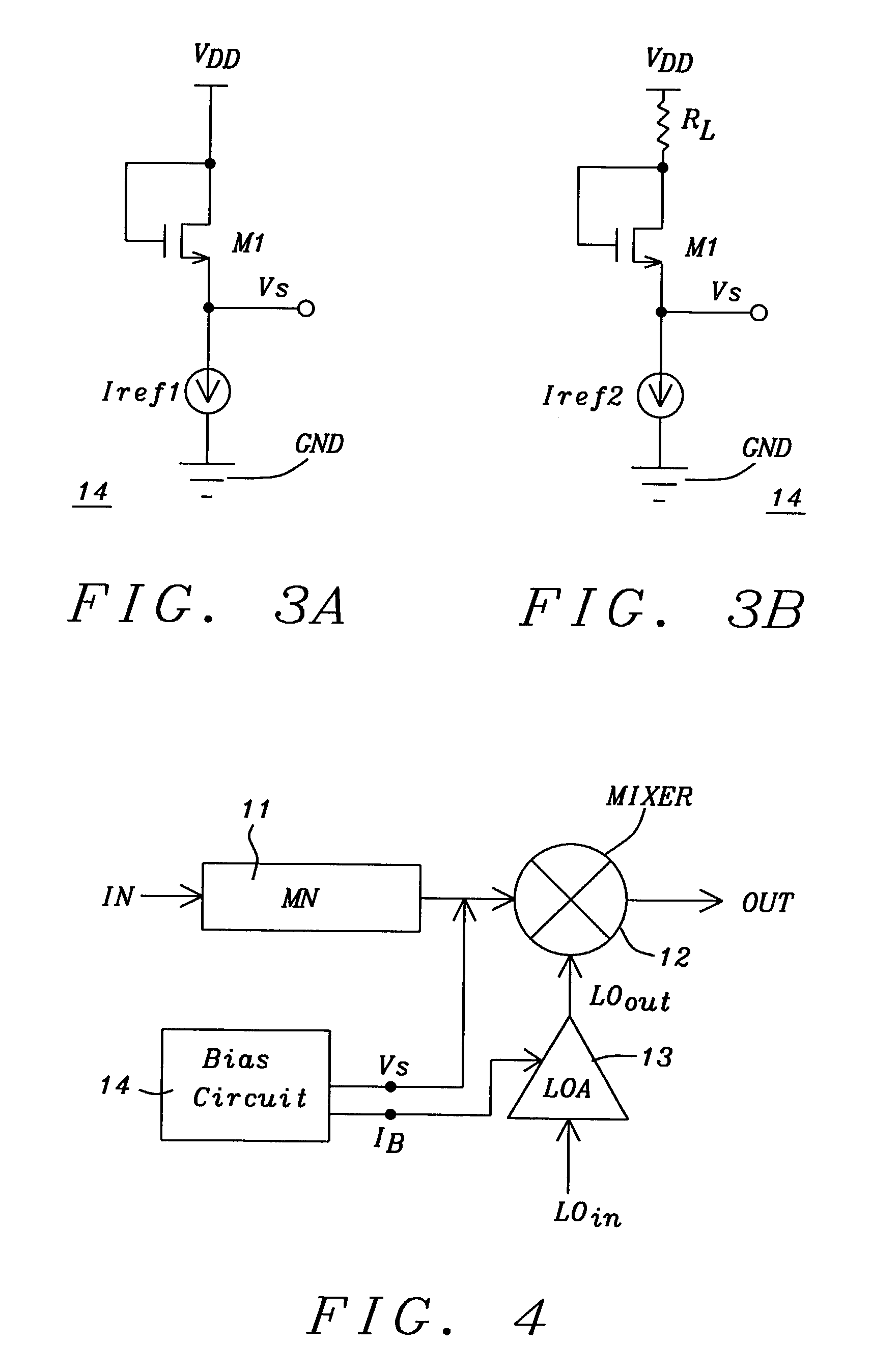Threshold voltage (Vth), power supply (VDD), and temperature compensation bias circuit for CMOS passive mixer
a bias circuit and temperature compensation technology, applied in the field of radio frequency mixers, can solve the problems of unattractive use as mixers, unfavorable conversion gain, noise figure, etc., and achieve the effect of stabilizing conversion gain, linearity and noise figur
- Summary
- Abstract
- Description
- Claims
- Application Information
AI Technical Summary
Benefits of technology
Problems solved by technology
Method used
Image
Examples
Embodiment Construction
[0030]FIG. 2 shows the schematic diagram of a CMOS passive mixer core 12. It comprises four n-channel MOSFET transistors, connected as shown, and allows input frequency up- or down-conversion to an output frequency for any local oscillator (LO) frequency. The radio frequency (RF) inputs are fed differentially from ports RFp and RFn, LO inputs are fed differentially from ports LOp and LOn, and the intermediate frequency (IF) outputs are obtained at ports IFp and IFn. The source and drain of first transistor N1 are coupled between input RFp and output IFp, respectively. The source and drain of second transistor N2 are coupled between input RFp and output IFn, respectively. The source and drain of third transistor N3 are coupled between input RFn and output IFn, respectively, and the source and drain of fourth transistor N4 are coupled between input RFp and output IFn, respectively. The gates of N1 and N3 are coupled to LOp, and gates of N2 and N4 are coupled to LOn.
[0031]To stabilize ...
PUM
 Login to View More
Login to View More Abstract
Description
Claims
Application Information
 Login to View More
Login to View More - R&D
- Intellectual Property
- Life Sciences
- Materials
- Tech Scout
- Unparalleled Data Quality
- Higher Quality Content
- 60% Fewer Hallucinations
Browse by: Latest US Patents, China's latest patents, Technical Efficacy Thesaurus, Application Domain, Technology Topic, Popular Technical Reports.
© 2025 PatSnap. All rights reserved.Legal|Privacy policy|Modern Slavery Act Transparency Statement|Sitemap|About US| Contact US: help@patsnap.com



